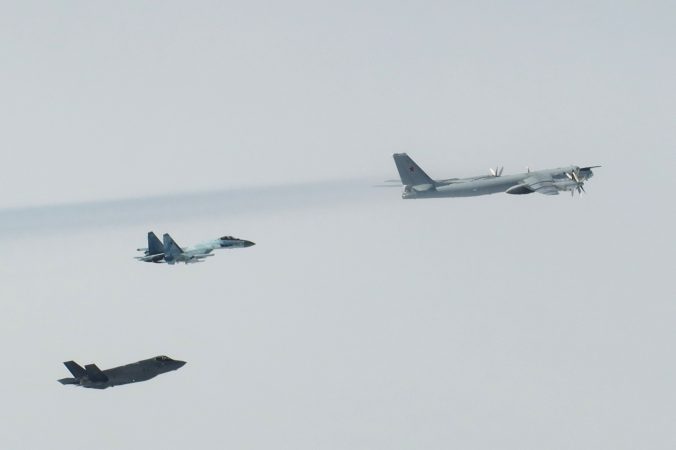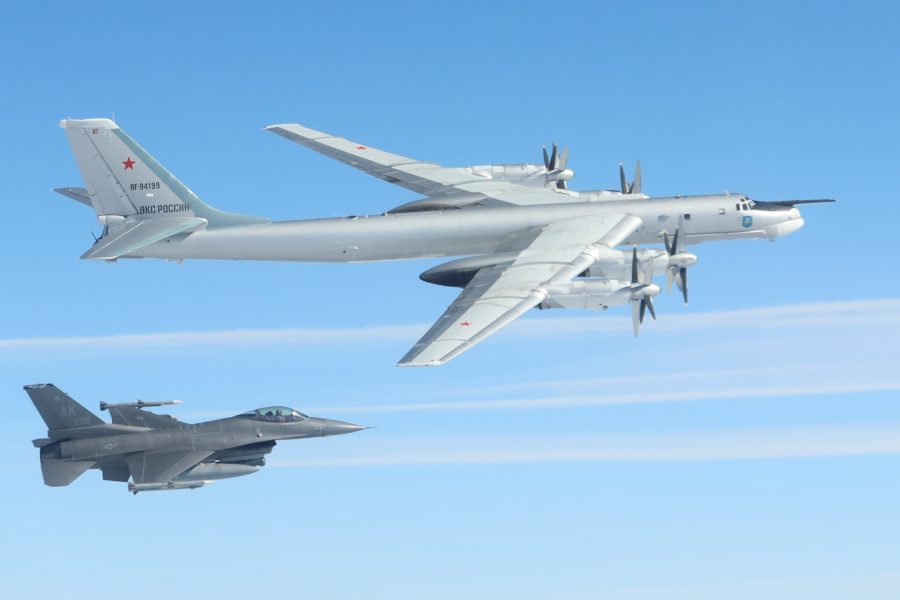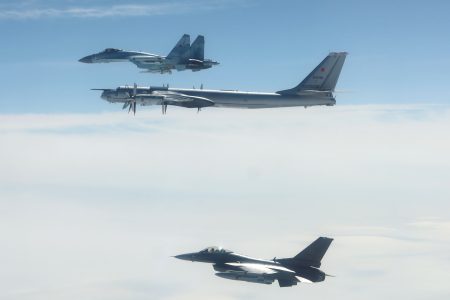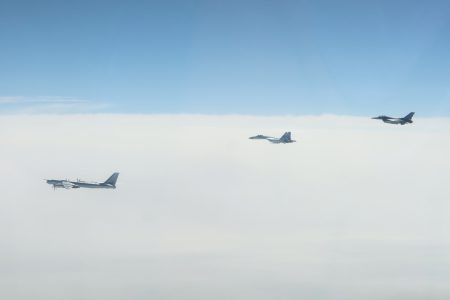Russian warplanes conducted a flight off the coast of Alaska on July 22, prompting an intercept from U.S. Air Force fighters assigned to North American Aerospace Defense Command in an incident that lasted over three hours, NORAD officials told Air & Space Forces Magazine.
Two Russian Tu-95 Bear bombers and two Russian Su-35 Flanker fighter jets were operating in the Alaskan Air Defense Identification Zone (ADIZ), a spokesperson for NORAD said. NORAD sent some 10 aircraft to “positively identify, monitor, intercept, and escort them out of the Alaskan ADIZ,” another official from the joint U.S.-Canadian command added.
NORAD officials said two U.S. Air Force F-35s and four F-16s, along with support aircraft including one E-3 Sentry command and control plane and three KC-135 tankers, were involved in the mission.
The Russian Ministry of Defense said the bombers conducted a 15-hour round-trip mission over the Bering Sea. Russian aircraft were in the ADIZ for approximately 3 hours and 15 minutes, according to a NORAD official. Moscow’s warplanes were operating in international airspace and did not enter U.S. or Canadian sovereign airspace, NORAD said in a July 22 release.
“This Russian activity in the contiguous U.S./Alaskan ADIZ occurs regularly and is not seen as a threat,” the command stated.
The Alaskan ADIZ is international airspace that extends out from America’s sovereign territory and is used as a buffer for air defense.
Still, NORAD stated that the airspace that makes up the ADIZ “requires the ready identification of all aircraft in the interest of national security.”

Last September, a Russian Su-35 fighter, flying with a Tu-95, cut across the front of a U.S. Air Force F-16 that was conducting a routine intercept of Russian aircraft in the Alaskan ADIZ, flying across the American jet’s nose in what is known as a “headbutt” maneuver.
“The conduct of one Russian Su-35 was unsafe, unprofessional, and endangered all—not what you’d see in a professional air force,” NORAD commander Air Force Gen. Gregory M. Guillot said in a statement after that Su-35’s interaction with the F-16.
The same types of Russian aircraft were involved in the July 22 flight off the coast of Alaska. But NORAD did not indicate anything unusual about the behavior of the Russian aircraft during the most recent encounter. Such flights occurred regularly during the Cold War and resumed in 2007.
“NORAD employs a layered defense network of satellites, ground-based and airborne radars, and fighter aircraft to detect and track aircraft and inform appropriate actions,” the command said in a statement July 22. “NORAD remains ready to employ a number of response options in defense of North America.”
The U.S. military conducts flights in other countries’ declared ADIZ areas, especially around disputed islands in the South China Sea. While China often protests, the U.S. insists it is operating lawfully in international airspace in those cases.
The long-range flight of two Tu-95s comes roughly two months after Ukraine’s spy agency launched a mass one-way drone attack on Russian airfields, destroying or badly damaging at least six Tu-95s on the ground, including in Russia’s east.
President Donald Trump has also recently expressed frustration with Russian President Vladimir Putin over stalled progress in peace talks, and the U.S. has now agreed to an arrangement with NATO in which it will backfill aid sent to Ukraine, such as prized Patriot missile defense systems. Russian Tu-95s have attacked Ukrainian troops and cities throughout the three-year-old full-scale war with air-launched missiles, which the Russians have paired with swarms of drones to overwhelm Ukrainian air defenses.
Editor’s Note: This article was updated July 23 with additional details.




